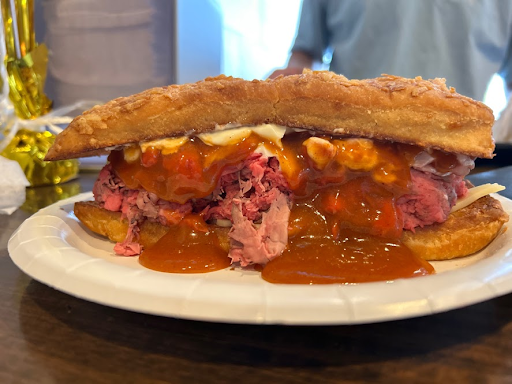For many students, the sound of the lunch bell is the highlight of their day. However, it can also serve as a reminder of the often questionable food choices that the National School Lunch Program (NSLP) advertises as a healthy meal. So let’s dive deeper. What’s really on your lunch tray?
Good Or Bad?
The school lunches provided in America tend to have both pros and cons. Some people see more of one or the other, but it can differ between students, teachers, and parents.
On a positive note, these lunches are very convenient when it comes to not having to pack the night before or buy extra food for home lunches. If a school participates in the NSLP, the lunches that it provides are free. This can benefit low-income families and even help families save more money.
Schools that participate in the NSLP also promote healthier eating habits. This includes encouraging students to eat a balanced meal that consists of the five food groups, and choosing to consume healthy food that can benefit students’ health. This takes the place of eating artificial, processed foods that provide no nutritional benefits.
On the contrary, school lunches tend to be low-quality when it comes to both taste and appearance. This is due to the fact that schools must meet the U.S. dietary guidelines while maintaining a budget. These guidelines require that the foods served have a certain amount of nutritional value (fats, sugars, etc.).
These lunches can also be stored and transported over long periods of time, but this is because they have been ultra-processed. Processed foods have a large content of fats, sugars, salts, and preservatives, but ultra-processed foods contain a much higher content. This poses a risk for chronic illnesses, even in young children.
Student Thoughts
Although signs of chronic illness may not be present immediately, 11 students recognized how they felt after eating school lunch using a google form.

To begin, 81.8% of students claimed that the school lunch made them feel sick, rather than healthy and refueled. They stated that they get stomach aches or cramps and occasionally even feel the need to vomit. Others reported they have become used to the food over the years and do not feel any effects.
One freshman who gets school lunch every day said in an interview, “I get it because it is convenient, but I can tell that the ingredients are cheap. They taste and feel disgusting.” Another student who brings home lunch says, “The school lunch is gross and hurts my stomach.”
Common food groups that make students feel ill include protein and dairy, specifically, the chicken and cheese provided by the school. Many students claim that they can tell it is not real, and this relates to the fact that protein and dairy are often turned into ultra-processed foods, as they do not last a long time without additives.
However, commonly liked food groups are grains, fruits, and vegetables. Specifically, pasta, salads, whole fruit, and caesar wraps. Students prefer them because they do not make them feel sick, and taste normal. This is because those foods are less likely to lose nutrients when being transported or stored, so less chemicals are added.
What Do You Think?
Now that you know the truth, is school lunch really a good option, or will you resort to home lunch? Either way, students should always be eating a healthy and balanced meal in order to stay focused and energized in school. However, people are starting to realize that eating school lunch isn’t the best way to do that. But what do you think?




















Nancy Michaud • May 29, 2025 at 3:29 pm
This is a great article and really good food for thought literally! We need to be more mindful of what we are eating because it is affecting our health mind wise, physically and in all aspects. Good job Nayana. This is a great article. There is much truth in the fact that we are in a huge way what we ea.